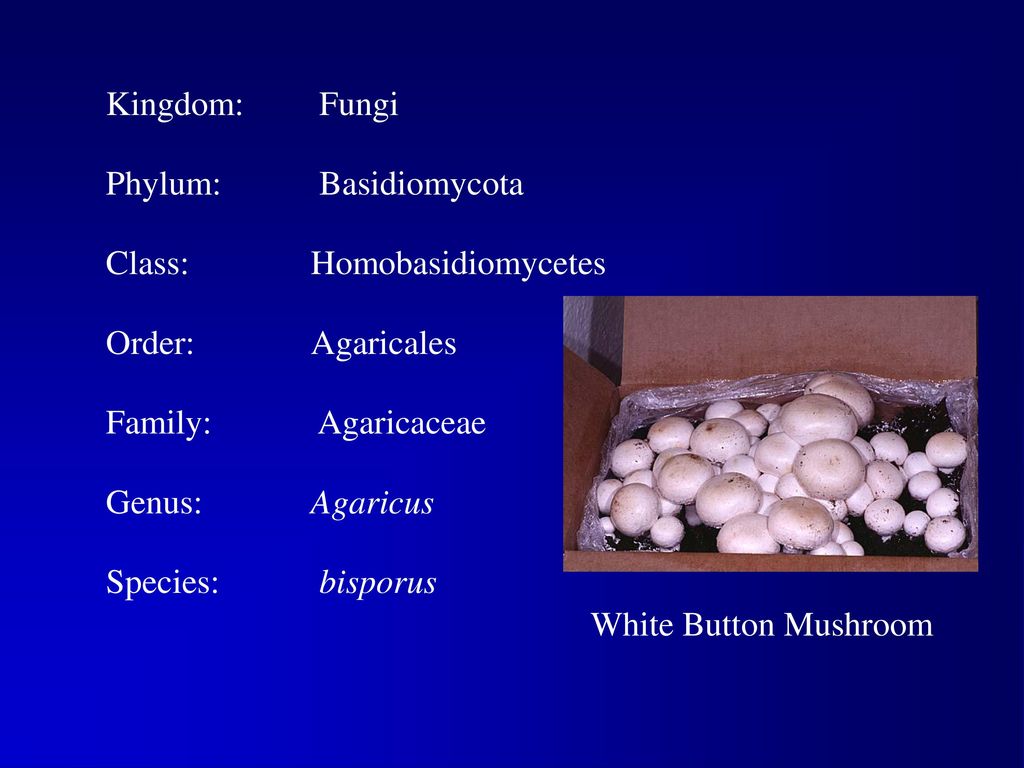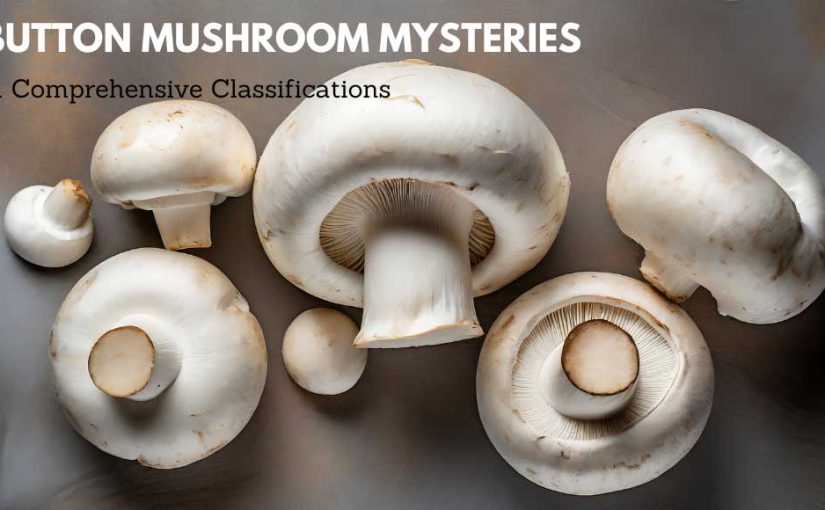Button mushroom classifications include Agaricus bisporus, which is the most commonly cultivated variety.
Morphological Classification
Mushrooms are fascinating organisms that come in a diverse array of shapes, sizes, and colors. Understanding their morphological features is key to identifying and classifying different species. In this part, we will study the different types of button mushrooms.
In this section, we will examine various types of button mushrooms. We will specifically look at the size, shape, and color of the cap. Additionally, we will consider the length and thickness of the stem, as well as the attachment and color of the gills.
Lastly, we will discuss the presence and type of the veil. Let’s explore these features to gain a deeper appreciation for the variety within the world of Agaricus bisporus.
Cap Size, Shape, And Color
The cap of a button mushroom is the top part that protects the growing gills. The size of the cap can vary significantly between different species of button mushrooms. Some caps are small, ranging from 1 to 5 cm in diameter. Others, on the other hand, can be much larger, reaching up to 10 cm or even more.
Button mushroom caps can present a range of variations in shape. Some are convex-shaped, forming a gentle curve similar to a small dome. Others can be flat or even slightly concave, creating a depression in the center of the cap. These variations in shape contribute to the aesthetic appeal of button mushrooms and can help differentiate between different species.
Button mushrooms can be white, brown, cream, gray, or yellow in color. The coloration of the cap can be uniform throughout, or it may feature contrasting shades or patterns. These variations in color help distinguish between different species of button mushrooms.
Stem Length And Thickness
The stem, also known as the stipe, provides support for the cap and connects it to the growing substrate. The length of the stem can vary depending on the species of button mushroom. Some mushrooms have short stems, only a few centimeters long. Others have longer stems that can be 10 centimeters or longer.
In addition to length, the thickness of the stem is another characteristic that varies among button mushrooms. Some stems are slender and delicate, while others are thick and robust. These differences in stem length and thickness play a role in the overall appearance and structure of button mushrooms.
Gill Attachment And Color
The undersides of the cap of a button mushroom contain the gills, which play a crucial role in spore production. The attachment of the gills to the stem can provide valuable information for classification purposes.
Some mushrooms have unconnected gills. These gills have a gap between the edge and the stem. Others possess attached gills, where the gills directly connect to the stem.
Gill color is another important characteristic to consider. Button mushrooms can have white, pink, or even black gills, with variations in shade and intensity. Gills and cap colors can be different, which helps identify species and looks visually impressive.
Veil Presence And Type
The veil refers to a thin membrane that initially covers and protects the developing gills of a button mushroom. As the mushroom matures, the veil may either break or persist in different forms. Some button mushrooms possess a partial veil, and one can observe remnants of the veil hanging from the edge of the cap. Others have a complete veil that covers the entire gill surface, often referred to as a closed cap.
Furthermore, the type of veil can provide additional insights into the classification of button mushrooms. Some species exhibit a membrane-like veil, while in others, the veil may be more cobweb-like or even waxy in texture. These variations in veil presence and type contribute to the diversity and classification of button mushrooms.
Taxonomic Classification
Button mushrooms are classified using a system that organizes them based on their shared characteristics. This classification system allows scientists and enthusiasts to better understand the relationships between different species and varieties of button mushrooms.
Kingdom, Phylum, And Class
Button mushrooms are part of the Fungi Kingdom. They are eukaryotic organisms that don’t have chlorophyll and get nutrients by breaking down organic matter.
Button mushrooms are part of the Fungi Kingdom. They belong to the Phylum Basidiomycota. This phylum includes mushrooms that produce spores on basidia.
Further down the classification hierarchy, button mushrooms are classified under the Class Agaricomycetes. This class encompasses a wide range of mushrooms, including many edible and economically important species. Within this class, button mushrooms share certain characteristics and form a distinct group.
Order, Family, And Genus
Within the Class Agaricomycetes, button mushrooms are classified under the Order Agaricales. This order is one of the largest and most diverse groups of mushrooms, covering a wide range of shapes, colors, and textures. It includes many familiar mushroom families.
Expanding further, button mushrooms are classified under the Family Agaricaceae. This family is characterized by mushrooms that typically have gills on the undersides of their caps. Button mushrooms, along with other well-known edible mushrooms, belong to this family.
At a more specific level, button mushrooms are classified under the Genus Agaricus. The genus Agaricus is home to many popular edible mushrooms, including the common white button mushroom (Agaricus bisporus). This genus encompasses a wide range of species that share common characteristics, including the production of edible fruiting bodies.
Species And Variety
Finally, button mushrooms are classified under the Species Agaricus bisporus. The species classification helps to further narrow down the specific characteristics and traits of these mushrooms. Within the species Agaricus bisporus, there are different varieties, each with its distinct features and growth characteristics.
Button mushrooms can be complex to classify, with ongoing discoveries and reclassifications happening. However, the current taxonomic classification provides a useful framework for understanding and studying these popular fungi.
Nutritional Classification
Button mushrooms are classified according to their nutritional composition. These classifications help determine their health benefits and suitability for various dietary needs.
Protein Content
Button mushrooms, also called white mushrooms or champignon mushrooms, are popular for their delicious taste and health benefits. Under the nutritional classification, protein content plays a significant role in determining the mushroom’s value. Protein is important for building and fixing tissues, supporting muscle growth, and keeping us healthy.
When it comes to button mushrooms, they are relatively low in protein compared to other protein-rich foods. However, they still offer a decent amount of protein that can contribute to a balanced diet.
Vitamin And Mineral Composition
Vitamins and minerals are micronutrients that are crucial for maintaining various bodily functions. Button mushrooms boast an impressive array of vitamins and minerals that add to their nutritional value.
These mushrooms contain B vitamins such as riboflavin (B2), niacin (B3), and pantothenic acid (B5). These vitamins are important for producing energy and supporting the nervous system. Button mushrooms have important minerals like potassium, phosphorus, and selenium. These minerals help keep the heart, bones, and immune system healthy.
Dietary Fiber Content
Dietary fiber plays a crucial role in maintaining digestive health and promoting regular bowel movements. When it comes to button mushrooms, they are relatively low in dietary fiber. However, every bit counts when it comes to incorporating fiber into your diet.
These mushrooms have some fiber that helps with digestion and prevents constipation by adding bulk to the stool. Adding button mushrooms to your meals can boost your fiber intake, especially when eaten with other high-fiber foods.
Carbohydrate And Fat Content
Button mushrooms have few carbs, so they’re good for people on low-carb or keto diets. This characteristic makes them a popular ingredient in various low-carb recipes. Moreover, these mushrooms are low in fat, making them a healthy addition to any diet. Low fat content makes them good for people watching their fat intake or trying to stay at a healthy weight.
In conclusion, button mushrooms shine in their nutritional classification. Although lacking in protein and fiber, they compensate with a wide range of important vitamins and minerals. Adding these healthy mushrooms to your meals can give you many health benefits and make your dishes taste great.

Credit: www.researchgate.net

Credit: slideplayer.com
Frequently Asked Questions
1. What Is Mushroom Order?
Mushroom order refers to the process of purchasing mushrooms online or from a distributor. It involves selecting the desired mushroom variety and quantity, providing shipping details, and making payment to complete the order.
2. What Is The Binomial Nomenclature Of A Button Mushroom?
The binomial nomenclature of a button mushroom is Agaricus bisporus.
3. What Type Of Vegetable Is Button Mushroom?
This mushroom is a type of vegetable that belongs to the fungi kingdom.
4. What Family Does Mushroom Belong To?
Mushrooms belong to the fungi family.
Conclusion
To summarize, understanding the various classifications of button mushrooms is essential for both mushroom enthusiasts and growers. By understanding the unique features like color, size, and shape, people can confidently recognize and grow these mushrooms. Whether you love food or want to learn about mushrooms, knowing more about button mushrooms will enhance your experience.
So, dive into this fascinating world of mushroom diversity and explore all the delightful possibilities they offer. Happy mushroom hunting!
